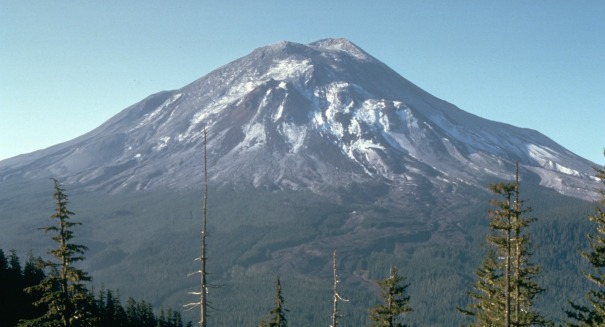
A huge amount of earthquakes have been rumbling deep underneath Mount St. Helens.
Mount St. Helens last erupted 36 years ago, but a swarm of earthquakes underneath the volcano have raised concerns that another eruption may be inching ever closer.
The massive 1980 eruption killed 57 people and demolished 250 homes, making it easily the worst volcano-related disaster in United States history. Now, scientists have observed a swarm of tiny earthquakes underneath the mount since March. Scientists think that this indicates the volcano is recharging with magma, according to news reports.
However, that is not an indication at Mount St. Helens that an eruption is imminent. Magma recharges can happen for many years without an eruption, and scientists haven’t seen the kind of ground inflation or shallow tremors that usually indicate a volcano is about to erupt.
Mount St. Helens is located in the Cascade Mountains, a comfortable 55 miles from Portland and 95 miles from Seattle. Scientists believe it has had four major explosive eruptions in the last 500 years, with the 1980 eruption being the most famous one. The USGS has monitored Mount St. Helens ever since, and scientists have used it to come to a better understanding on how volcanoes operate.
“On March 16, 1980, the first sign of activity at Mount St. Helens occurred as a series of small earthquakes,” the USGS said in a statement on the 1980 eruption. “On March 27, after hundreds of additional earthquakes, the volcano produced its first eruption in over 100 years. Steam explosions blasted a 60- to 75-m (200- to 250-ft) wide crater through the volcano’s summit ice cap and covered the snow-clad southeast sector with dark ash.
“Within a week the crater had grown to about 400 m (1,300 ft) in diameter and two giant crack systems crossed the entire summit area,” it continued. “From the start of the eruption, the bulge grew outward—nearly horizontally—at consistent rates of about 2 m (6.5 ft) per day. Such dramatic deformation of the volcano was strong evidence that molten rock (magma) had risen high into the volcano. In fact, beneath the surficial bulge was a cryptodome that had intruded into the volcano’s edifice, but had yet to erupt on the surface.”

Leave a Reply